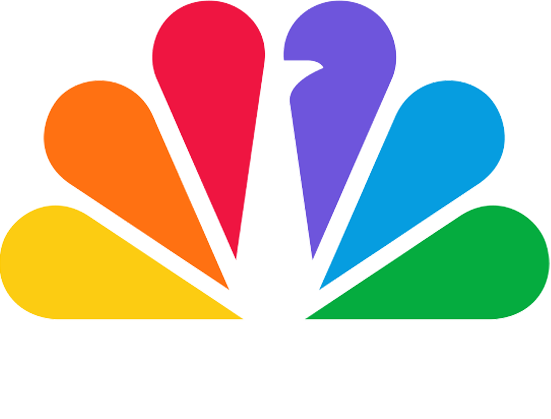WHEN: Today, Wednesday, March 16, 2022
WHERE: CNBC’s “Closing Bell: Overtime”
Following is the unofficial transcript of a CNBC exclusive interview with DoubleLine Capital CEO, CIO and Co-Founder Jeffrey Gundlach on CNBC’s “Closing Bell: Overtime” (M-F, 4PM-5PM ET) today, Wednesday, March 16th for premiere week. Following are links to video on CNBC.com:
All references must be sourced to CNBC.
PART I
SCOTT WAPNER: Now to our “Overtime” exclusive. DoubleLine Capital’s Jeffrey Gundlach is with us live to react to what the Fed just said and what the Fed just did. Jeffrey, welcome back. It’s great to have you on the new program.
JEFFREY GUNDLACH: Nice to be on your new show, Scott. Congratulations.
WAPNER: Thanks so much. So, you heard the Fed, they’ve spoken. It’s your turn. What do you think?
GUNDLACH: Well, the Fed follows the 2-year treasury and I’ve been saying this for years and years. I don’t know if your viewers can see this chart here. But it’s a chart of the Fed funds rate in red and a 2-year Treasury in blue. So, look what the 2-year Treasury in blue did starting fourth quarter of last year. It went up by guess what? 175 basis points. So, what did the Fed do today? They said they’re gonna raise Fed funds by 175 basis points. And so that’s just them following again, and they’re way behind. I was listening to this prior segment. You know, here’s one more chart I’m going to give you. The blue line is wage growth, wages and salaries and employment cost index. The red line is Fed funds. The blue line is the wage growth. If you look carefully at that chart, the Fed follows wage growth historically, that chart goes back to 1985. This time, wage growth has exploded higher, and the Fed has been behind the curve and I, I thought that Jay Powell did an okay job today. He was a little bit of an equivocator. I thought it was better than the last time we were in sort of a predicament which was in the fourth quarter of 2018 when the Fed was raising rates and doing quantitative tightening. I think the stock market was way oversold. I think commodities got way overbought. And so, I’m not surprised that we’ve had relative market stability into this Fed decision and I expect that the oversold will continue to work its way higher, in other words, stocks will go higher. I saw your question about what will be higher on the S&P at the next meeting, I think probably we will be within that time period.
WAPNER: What will be higher?
GUNDLACH: I think it will be happening higher because we’re oversold and we didn’t get the 50 which the market was fearing I think although I thought the probability that was awfully low, and we didn’t get any clarity on reducing the balance sheet. And I think that the market kind of likes the fact that the party is going on. They sort of like the fact that the Fed is behind the curve for now, even though it means that they may have to accelerate and get in front of the curve for now, rates are still really accommodative. And the Fed didn’t do the 50 and there’s, they’re not shrinking the balance sheet yet. I think the market will roll over once the Fed raises rates a couple more times and if they start the roll off, which he sort of alluded to being the base case that the next meeting, I think that’s when you’ve got the double whammy. At least he didn’t pull the 20 to 18 thing of autopilot. He tried to have some flexibility. He gave the impression of autopilot. But he didn’t say it and I think he even said the word flexible or nimble or something like that and the market likes that over the, over the oversold.
WAPNER: So the median Fed official now sees seven hikes this year right? So six more for the remainder of the year. Does that sound right to you? Is it too aggressive? Not, not aggressive enough? Too late? We know it’s too late but how do you see where the Fed sees things today in terms of the number of rate hikes that we now expect. When we visited about a month ago at the Super Bowl, you said probably five or so was the number. This appears to be more aggressive and make no mistake, this was a hawkish Fed today.
GUNDLACH: It was definitely on the hawkish side. You try to thread the needle, but it was too hard to do. So, it was a little bit hawkish. I’m just gonna say one more time, judge. The Fed follows the two-year Treasury. The 2-year Treasury went up 175 basis points, now they’re talking seven hikes. The 2-year Treasury has gone a lot higher in yield since we met on February 11th and so it’s totally appropriate for the Fed to be adjusting that higher. But the one thing I heard a lot of discussion about financials and it relates to where we are in the cycle, I think Josh Brown really nailed it, and that is we’re starting this Fed hike cycle with a very flat yield curve. Typically, when people say financials are good for the first three or four rate hikes, that’s because the curve starts out steeper than where we are right now. The curve 2s to 10s is basically puts you on recession watch when it’s inside of 50 basis points, and it gets you on a really big recession watch when you get down to flat. We’re right exactly in the middle at 25 basis points and that is an incredibly flat yield curve given where we are in terms of the absolute rate level versus the inflation rate and the whole thing. Also investors should look at 5s, 30s. the yield spread between the 5-year Treasury and 30-year Treasury. Same deal. You’re on recession watch when you’re inside of 50 and when it inverts, you’re pretty much on your way to recession. Well, same thing as 2s and 10s. We’re right there in the middle. But the big message of the market today is that people haven’t really talked about is it the 30-year Treasury bond rallied. The 30-year Treasury bond one year ago was basically at exactly the same level as it is today. The attitude about Fed policy has changed so mightily in the last year and if the 30-year Treasury rate is unchanged, interest rates in Europe have gone up on 10-year treasuries by a fair amount from a year ago. They’ve also gone up in Japan but not in the United States. All we’ve done is flatten the curve and that puts us later in the cycle I think because as people have said correctly, the bond market has done the tightening. They’re following the 2-year and the flatness of the yield curve at these rate levels is something that is going to be problematic, but again, the market is working off an oversold. When the VIX gets towards 40, I’ve just gotten to the point in my career I’ve seen this movie so many times, when the VIX gets above 35, I don’t care how bad the tape looks, I don’t care how bad the geopolitics look, you’re supposed to get more bullish, not more bearish and you got an oversold bounce. And the market was very oversold, particularly the NASDAQ, and commodities were very overbought. One thing on inflation which has surprised everybody to the upside just about and it’s going to remain sticky, but you are going to get some relaxation on inflation. You go to have these base effects, it’s a, it’s a true narrative that you have a huge month over month increases that are coming in several months from now and it’s likely that we’re going to see the over year inflation rate go down somewhat. So that might give the Fed a little bit of a tailwind and not have to work so hard. But Jay Powell said powerful tools, using our tools, we’re going to use our tools, we’re going to bring the inflation rate down so you’re right to coin that, to frame that as a hawkish meeting.
WAPNER: Yeah. 10% inflation is what you recently said you thought the projection would be. Are you sticking with that today? Was that a little bit hyperbolic?
GUNDLACH: It was a little hyperbolic. I actually said I think nine, and maybe 10. I don’t, I’m not even sure we’re gonna get a nine now because the commodity prices have come down a fair amount. That was really, that was at the moment that oil was at about $125 a barrel and the decline from there has been sufficient that it looks like we’re going to get eight handle inflation. We might even get it, you know, in the next print and it might stay there for a couple of months. But I don’t think we’re going to have the same inflation rate the full year 2022. I think it’s going to be lower for the full year than it was in 2021 but not what the Fed is forecasting. We’re not going to get low fours. We’re not going to get mid fours. I think we’re going to be talking about again, it’s going to have a lot to do with commodity complex, but I think we’ll be talking about something around high fives inflation for 2022 which is still not close to the Fed’s stated topic target all the way down to 2%. So one thing I want to talk about is there’s a way to project what the yield curve will look like in a year using well the one-year forward curve of the Treasury market’s pretty wonky. But it predicts one year from now that the 2-year Treasury will be at 250 and every other rate along the yield curve will be at 250. Now I respect the bond market message of course, but I think that’s too high. I think actually the yield curve will be flat, but it won’t even be as high as 250. So we’ve already seen I think the peak potentially in the 30-year treasury bond because it just doesn’t go up in yield in spite of all of the changes we’ve seen macroeconomically and with the Fed. We’re just getting a flatter and flatter curve. So, the strange thing is that this year, year to date, we’ve had highly correlated S&P 500 stocks and Treasury market and the broad bond market broadly unfortunately is correlated on the downside. So stocks down, you know, 10%, 12% through yesterday, some down much more than that. Bond funds, even some of them call themselves core bond funds, there are some that are down 9%, 10% total return year to date, not mine, thankfully. But you know, just the bond market index is down, you know, 5%. So the 60/40 mix that people traditionally have, and I think they’ve probably wandered from that in recent years, but that 60/40 mix is a pretty lousy return for the first quarter. It might get a little bit better in the final two weeks. But I think what Josh Brown said again, I thought he made some good points. I think he said that when people get their statement, they’re not going to be happy. And that that could, that could lead to the next you know, some, some volatility as we enter the month of April.
WAPNER: Let me ask you this, do you, do you think we’re going to have a recession? And are you more or less confident today that the Fed can actually pull this off in part because of what you said about inflation actually coming down a bit, not to target clearly, but certainly not going the opposite direction any, any steeper?
GUNDLACH: It’s a really bad bet to count on the Fed engineering a soft landing in this kind of environment with the curve partially inverted, but let’s just call it quite flat at this low yield level. I just don’t see it and again, I can’t reiterate enough. This balance sheet tapering or shrinkage is going to be correlated with a significant headwind for the S&P 500. I talked about this for years that there’s a tremendous correlation between the size of the Fed’s balance sheet which is now just under $9 trillion and the market capitalization of the S&P 500. And we talked about how that was going to be supportive back last summer that’s going to be supportive into year end. But now we’re going the other way. We’ve got the Fed raising interest rates and the great Marty Zweig used to say, “Rule number one, don’t fight the Fed. Rule number two, see rule number one.” And the Fed is raising rates sequentially as a base case and they’re going to be tapering, and that means multiple contraction is going to continue and this is going to be, I don’t think we’re going to go back to the highs of the year in the stock market. I think we’re going to be higher in May, but I think we’ve seen the high of the year with this with the Fed and the yield curve and the consumer sentiment being pretty soft. Although I will say something on the consumer sentiment, I noticed somebody commented that it was in a freefall and that’s true, from the University of Michigan, but it’s really because of autos and housing, and autos are up so much that people realize that it’s a very uneconomic time to buy a vehicle and housing is up 30% on the national median, over the last two years. It’s just possible that the sentiment will get a little bit better if the inflation numbers start to peak out and if we can just get that inflation rate below six, it’s possible that the recession gets forestalled. I don’t, I don’t have a base case of a recession this year. But I do think that we’ll probably get one in 2023.
PART II
WAPNER: Welcome back to “Overtime.” More of my exclusive conversation with DoubleLine CEO, Jeffrey Gundlach. We’ve had a lot of big hitters on the network this week Jeffrey, Scott Minerd among them who said, and we’ve talked a lot today about the 2-year and you mentioned that 30-year but the 10-year he thought maybe the yield was topping out in his words. Two to two and a quarter was the range he saw. You agree with that?
GUNDLACH: I think the long end as I referenced in the first segment, I think the long end saw its peak last year. I mean, the long bond was, was up substantially higher than that, at its peak where it is right now. And so I think, broadly, that the long end of the curve is reasonably safe place to be which is a very strange thing for me to say because the valuation of it is so terrible relative to inflation. We have a long bond, you know, below two and a half percent, you got the inflation rate pushing 8%, but basically, it’s just because of the economic situation and the uncertainty and the relative comparison to other bonds in the world even though that comparison has gotten less favorable for the United States. But I do think I do think that investors and we we’ve been talking about this in our, our get togethers Scott for the past few times that as weird as it sounds, I think investors should own long term treasuries as part of their portfolio. I own some long-term treasuries as part of my core strategies and even my flagship fund which is we own the long ones because they will do well during a turnover in the economy and certainly, if the inflation rate is, is rated lower as we move forward in the year, so I think those are okay. In fact, I think bonds broadly are sort of okay in spite of their bad valuation. In fact, one area that I’ve, have not been very enthusiastic about for quite some time is the corporate bond market. The investment rate corporate bond market, the yields have quietly been going up and going up faster than treasury yields, which means their relative spreads are getting wider. And the balance sheets of corporate America are in great shape. The other thing that now has turned into a potential positive with, with corporate bonds and longer-term treasuries is that duration, interest rate risk isn’t, isn’t a problem at the present time. So corporate balance sheets are in good shape. Corporate bonds have a very, they have a lot of interest rate risk which hasn’t been good, but now it’s not been that painful. They have a duration, the LQD ETF at times has a duration of 10 which means it has more interest rate risks than even the 10-year Treasury, but they’ve gotten cheaper and credit product broadly has gotten cheaper even as yields have gone up. So until such time as there’s closer to a recession, in view, I think it’s a reasonable time to be moving into some of these areas that have been widening kind of stealthily in the last several months.
WAPNER: And this is very interesting.
GUNDLACH: Yes, go ahead.
WAPNER: I’m sorry, finish finish your thought, my bad. I didn’t mean to step on your toes.
GUNDLACH: That’s all, that’s fine. I’m just saying that we’ve been, we’ve been actually buying some corporate debt and we had liked a bank loans in the junk bond market relative to regular high yield but our answer on that has really neutralized, and now we’re sort of favoring regular high yield more. I think that the investment business is always anticipatory. So, everybody knew that the Fed was going to go on a sequential rate hike thing and so the fact that that was going to happen got priced in the bank loan market. So BKLN, the bank loan ETF held up until very recently far better than JNK, which is the ETF for junk bonds or so called high yield bonds. I call them junk bonds because the yield’s not high but I think what’s been happening in recent weeks is people are starting to realize that the Fed is priced into the market, the 2-year Treasury has priced in all these rate hikes and the bond market is saying that we’re not going to get that much more of a yield increase on the 2-year Treasury. It’ll go higher, of course, but I think the 2-year Treasury even could be getting close to its peak for this cycle. The bond market says it’s going to peak out around 250. As I said, in the prior segment, I don’t even think it’s going to get that high. So at 2%, which we kissed today on two-year, what’s wrong with a two-year Treasury. I mean it’s very low risk, it matures in two years. It’s probably good, it’s probably a good time to have dry powder sometime in the next two years if you’re going into recession, but just shorter duration product in general that has very little interest rate risk, and I’ve been talking in the past with you Scott of having cash and these days, I think you’re better off in the two-year Treasury than you are in cash because it’s going to take, take time for cash to get your yield up to that 2% level where the two-year is so a barbell in the bond market is sort of interesting, where you own sort of the short end and the long end because there’s really no yield difference. You own that for totally different reasons but both of them have a, have a spot in a portfolio.
WAPNER: I love the fact that you’re giving our viewers in “Overtime” some real actionable advice. But I have to say in listening to you talk for the past several minutes, I don’t know what was in your breakfast this morning, you’re more positive on a lot of things than I expected you frankly to be. You think stocks can go up until May. You’re suggesting that bonds can be a good investment, so bonds and stocks can go up at the same time. You talk fairly favorably about high yield in certain opportunities and you even think inflation is going to come down even albeit slightly that’s a much more positive if you want to call it that picture then frankly, Jeffrey, I expected from you.
GUNDLACH: Well judge, I’m old school. When you mark down the NASDAQ 20%, I like it better. I don’t like buying stuff what’s at an all-time high in a massively stretched valuation. I didn’t like junk bonds at all, you know, several months ago. I didn’t like corporate bonds because their spreads were too tight but when the market reprices, you’ve got to, you’ve got to reallocate your thinking in your portfolio so on a really big picture thing, I want to show the viewers two more charts. So what I’ve been talking about European stocks versus US and here’s the chart, when the blue line is going up, that’s the S&P 500 outperforming Europe. And when the blue line stops going up, which happened back in 2020 almost two years ago, Europe has performed in line even, even lately, which is sort of shocking given how much exposure Europe has to this to this war that’s going on between Ukraine and Russia. And yet, yeah, they underperformed briefly when the invasion started, but they basically snapped back and have been in line with US stocks. So I kind of still think that you have a reason to be longer term and one last slide which is the NASDAQ versus the S&P 500. When the blue line is going up, the NASDAQ is outperforming. This was the .com thing. This is now and we’ve we’ve rolled over so I think that the NASDAQ is not the place to be. For the short term, yes because it’s oversold. But if you’re truly an investor, I’m not talking about between now and May here. I’m talking about looking forward to 2023 and beyond, I think you want to, want to avoid these greatly overvalued momentum stocks. And I also think that investors should potentially think about investing in emerging market equity gradualistically as volatile as all get out. But I think, I think ultimately it’s going to be a strong performer for a multiyear horizon and it’s cheap.
WAPNER: So you said at the Super Bowl when I talked to you about emerging markets that I think you said it almost exactly you hadn’t start buying it. You didn’t start buying it yet. It’s okay to start, you know, averaging into it. Have you started doing that yourself in emerging markets?
GUNDLACH: No, I have not. I’ve not bought emerging market equity. I really, one of the reasons is that for the emerging market trades to really work, you need the dollar to go down and the dollar is, is on a flight to quality bid and it’s also bid up because the yield curve flattening is the, one of the best short-term indicators of the direction of the dollar. So, the yield curve flattening leads to a higher dollar and the yield curve steepening tends to lead to a weaker dollar. So, with the yield curve flattening, the dollar has maintained a bid and with the geopolitics. So the trade I’m talking about with emerging markets is one you want to invest for your grandchildren’s college education. It’s one where you want to buy it systematically. I’m not in any hurry to start doing it but I don’t think it’s foolish to start doing it. I’m just being more, you know, I watch this stuff like a hawk day in and day out. For somebody that has a real, somebody that has a real job, they might want to put in something systematic. You can’t watch it tick by tick. But I will observe that emerging markets have also stopped underperforming in spite of all of this upheaval. Also emerging market debt, ex Russia, has widened out a fair amount stealthily as well. It’s about 450 basis points over, over treasuries, and that’s why by, by a fair amount, so emerging market debt is something we’ve been cautious on and thankfully, for various reasons, we were extraordinarily underweight in Ukraine, Russia and the like. So we’ve managed to sidestep that banana peel, but I do think that a lot of these things that have widened out, I’m expecting some, some stability. As a trader, you want to be increasing risk. As an investor, I mean, investor I mean, two plus year horizon, you actually want to use this this period of strength to reduce risk.
WAPNER: Okay, let me ask you finally before I let you run, Bitcoin or gold in this new environment that we’re now in. We at least have a little more certainty on where the Fed path looks to be. What would I rather own today if I’m watching this program, Bitcoin or gold or a crypto you can take crypto in general or gold?
GUNDLACH: Well, I use Bitcoin. You know, Bitcoin has fallen into a range with the high end being 60,000 and the low end being 40,000. It seems like every time we get together, it’s either at 60 or at 40. Last time, it was at 40 so it hasn’t moved since then—
WAPNER: That’s true.
GUNDLACH: Time before that, it was at 60. So with the range of 40 to 60 and gold being in a range that sort of, I don’t know, let’s call it 1750 to 2000, gold is sort of in the middle of its range. Bitcoin is at the low end of its range. So I would take or now through, through the next Fed meeting, I will take Bitcoin over gold.
WAPNER: Ah, interesting. Look I appreciate—
GUNDLACH: Look, you can’t believe all this positive stuff I’m saying.
WAPNER: Exactly.
GUNDLACH: But it’s for the short-term. Again, my long-term view is still that we’re in a debt disaster situation and the only way out is to monetize or to default. That’s always going to be the case. The mathematics just doesn’t work of paying off $168 trillion of unfunded liabilities with a $24 trillion nominal GDP. That’s still coming and it’s coming in the next recession unfortunately. That’s when the dollar goes down so that’s what I’m telling investors—
WAPNER: You gave us and our viewers a lot. That’s for certain. Put the next Fed meeting down on your calendar, we want to have you back in “Overtime” to digest and discuss that one too. Jeffrey Gundlach, I appreciate your time today. Thanks so much.
GUNDLACH: Alright, thanks judge. Good luck everybody.




















